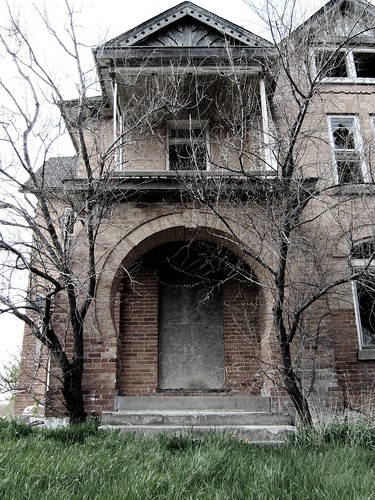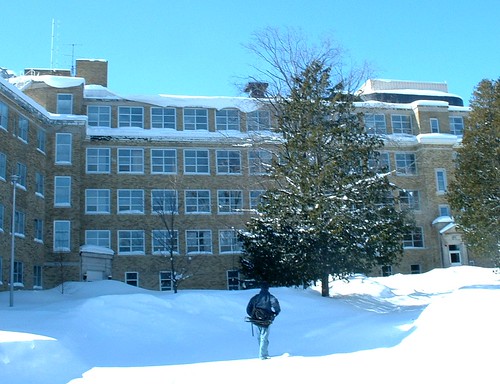 I recently returned to the local Urban Exploration attraction 'Edgar Adult Occupation Centre' (a.k.a. Base Edgar), after more than a year away.
I recently returned to the local Urban Exploration attraction 'Edgar Adult Occupation Centre' (a.k.a. Base Edgar), after more than a year away.This place seemed even more mysterious, interesting and entertaining than it did last trip.
First, a short bit of history:

Built as a radar station for the DND in 1952, as part of the Pine Tree Line, this base closed in 1964. Approximately 170 enlisted served here. With thier families living in the Private Married Quarters (PMQ's) on site, the total population (at it's hieght) equaled approximately 350 people.
This massive site had offices, maintenance yards, a school, stores, mess halls, and a recreation centre which housed a movie theatre, swimming pool, and a bowling alley.
[ For more history, see http://www.pinetreeline.org/ - - a site previously maintained by the recently deceased Ren L'Ecuyer and now run my his wife Margret ]
The base was sold to the Province of Ontario in 1964 and operated as the Edgar Regional Centre or Adult Occupational Centre under the Ministry of Community and Social Services. The Ministry maintained the site for the mentally hanicapped until it closed under Mike Harris' Progressive Conservative regime in 1996.
Back to the present day, the centre sits sadly abandoned. Unfortunately, any prospective buyer will be accutely aware of the rapidly deteriorating infrastructure.
 Although abandoned, it still is witness to some limited use by Provincial and Municipal SWAT Team tactical training. UrbEx Barrie made a number of interesting discoveries which include (but are not limited to), ammunition cassings, smoke grenades, well ventiliated target posters and city bus that looked like Swiss Cheese. The fact that almost every door lock was blown out in several buildings (very obviously tactical entry explosives), it shows that a lot of training was conducted here.
Although abandoned, it still is witness to some limited use by Provincial and Municipal SWAT Team tactical training. UrbEx Barrie made a number of interesting discoveries which include (but are not limited to), ammunition cassings, smoke grenades, well ventiliated target posters and city bus that looked like Swiss Cheese. The fact that almost every door lock was blown out in several buildings (very obviously tactical entry explosives), it shows that a lot of training was conducted here.The last exploration took in only a fraction of the buildings and UrbEx Barrie hopes to return soon.










